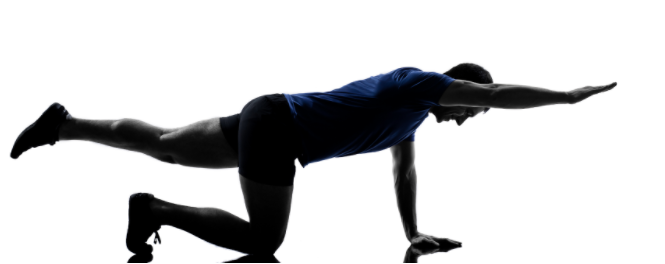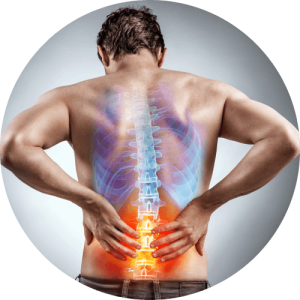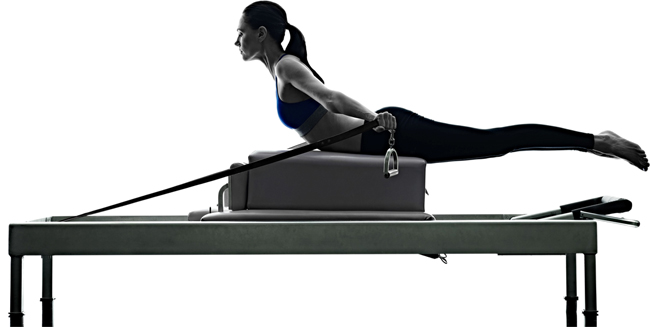WHAT IS LOWER BACK PAIN PHYSIOTHERAPY?
At Pilates4Physio we provide treatment for acute and chronic lower back pain. Acute refers to a recent strain or sprain with pain. The time frame can vary from a week to 3 months. Chronic or persistent lower back pain is a condition that has been painful for over 3 months.
Treatment for both acute and chronic are different as the context of the injury and type of pain is not the same. Both conditions require pain control and management, advice on what to avoid and what is safe to do, education about the normal course of acute lower back pain; manual therapy and rehabilitation exercises.
The research on lower back pain shows that some chronic or persistent cases of lower back pain require a ‘whole person’ approach. Pain can be aggravated by stress and poor sleep. Fears about movement or beliefs about certain activities can perpetuate pain.
Physiotherapy for lower back pain is not just about strengthening the core abdominals. We look at muscle balance in your trunk muscles and pelvis to see what the root cause is for your injury or pain. There are many factors that can influence lower back pain. We look at the mechanics and psycho-social drivers of lower back pain. More persistent lower back problems will have more complex needs. Generally, movement with strength is still key with all types of pain.


WHY NEED PHYSIOTHERAPY FOR LOWER BACK PAIN?
- You have have had a recent/acute sprain or strain. You could have moved the wrong way or lifted something. The spinal joints, discs and muscles can be over-loaded. Your pain may be localized to the lower back and does not radiate lower.
- Sciatica involves irritation of the nerve. The nerve runs down the back of hip, leg and into the foot. You may experience symptoms anywhere along the nerve. Symptoms may include numbness and tingling and pain. Usually the cause is a compressed nerve in the lower back from L4/L5 and L5/S1 vertebrae levels.
- Lumbar Disc injuries can also produce sciatic symptoms. The disc material may press on the nerve roots that branch into the sciatic nerve. Not all disc injuries produce the same symptoms. Discs can sometimes just become irritated and painful. They may refer pain to the buttocks and groin. Not all disc injuries lead to sciatica.
- Muscles in the back can also become strained as a result of over-loading. Short periods of rest and gradual movement will restore normal movement.
- For all these types of lower back pain the common symptom is pain. There is also loss of movement and some level of disability. The treatment is focused on pain and restoring pain free movement. The research supports movement and exercise to reduce pain and gain strength again. Manual therapy (massage and joint mobilization) will assist with pain relief.
THERAPY TREATMENTS
- Manual therapy (massage and joint mobilization):Manual therapy has been shown to have a neuro-physiological effect on pain and restoration of movement. We do this by mobilizing the joints directly in different directions. Massage reduces the muscle spams also associated with pain and stiffness.
- Exercise and Pilates:We use Pilates-based exercises using the classic equipment. This allows supported movement to reduce pain and increase gradual strength. Gradual movement is effective at reducing pain. Pilates focuses on dynamic strength which is what we need to be fully functional. For example, we need to be able to bend down and have the strength to pick up heavy objects. The more dynamic strength we have, the more resilient are back will be.
- Functional Rehabilitation:Gradual range of motion exercises stimulates the lower back joints and muscles. As pain reduces and inflammation is less, you will be able to progress to more resistance. Pilates equipment allows graduated loading into the lower back joints. We use arm and leg exercises as well to strengthen the back. The lower back needs to be able to tolerate all directions of movement. The we look at more functional activities, like bending and lifting and turn those into exercises.
- Post Surgical:If you have had disc surgery to remove part of a disc, Pilates based rehabilitation is still appropriate. We also work with spinal fusion and other surgeries. We will liaise with your surgeon for any protocols they want us to follow. The same principles for rehabilitation apply to surgeries. Gradual movement, followed by strength and stability.

FREQUENTLY ASKED QUESTIONS
Does lower back pain mean my core is weak?
The concept of core muscles is more complex than your abdominals. Your lower back muscles are also part of your ‘core’. We look at your trunk muscles as a whole, including the spinal muscles for rehabilitation.
How do I know if I have lower back or sacroiliac joint pain?
We test your sacroiliac joints with manual tests to see if they are a cause of your pain. Certain pain patterns and how they are produced with tell is if your pain is from the lower back or pelvis.
How long will it take to get better?
The more persistent and long standing the pain, the longer it can take. Pain has to be managed carefully to avoid a flare-up. We suggest regular sessions with our physiotherapist, using the Pilates equipment. These sessions show us what your back can tolerate. Then we can provide the right home exercises. It is best to do weekly sessions until your pain is under control. Chronic pain can take up to 6 months to rehabilitate. Acute episodes can take from 4-6 weeks to settle down. It can also be very individual response depending on how much rehabilitation you can do.
